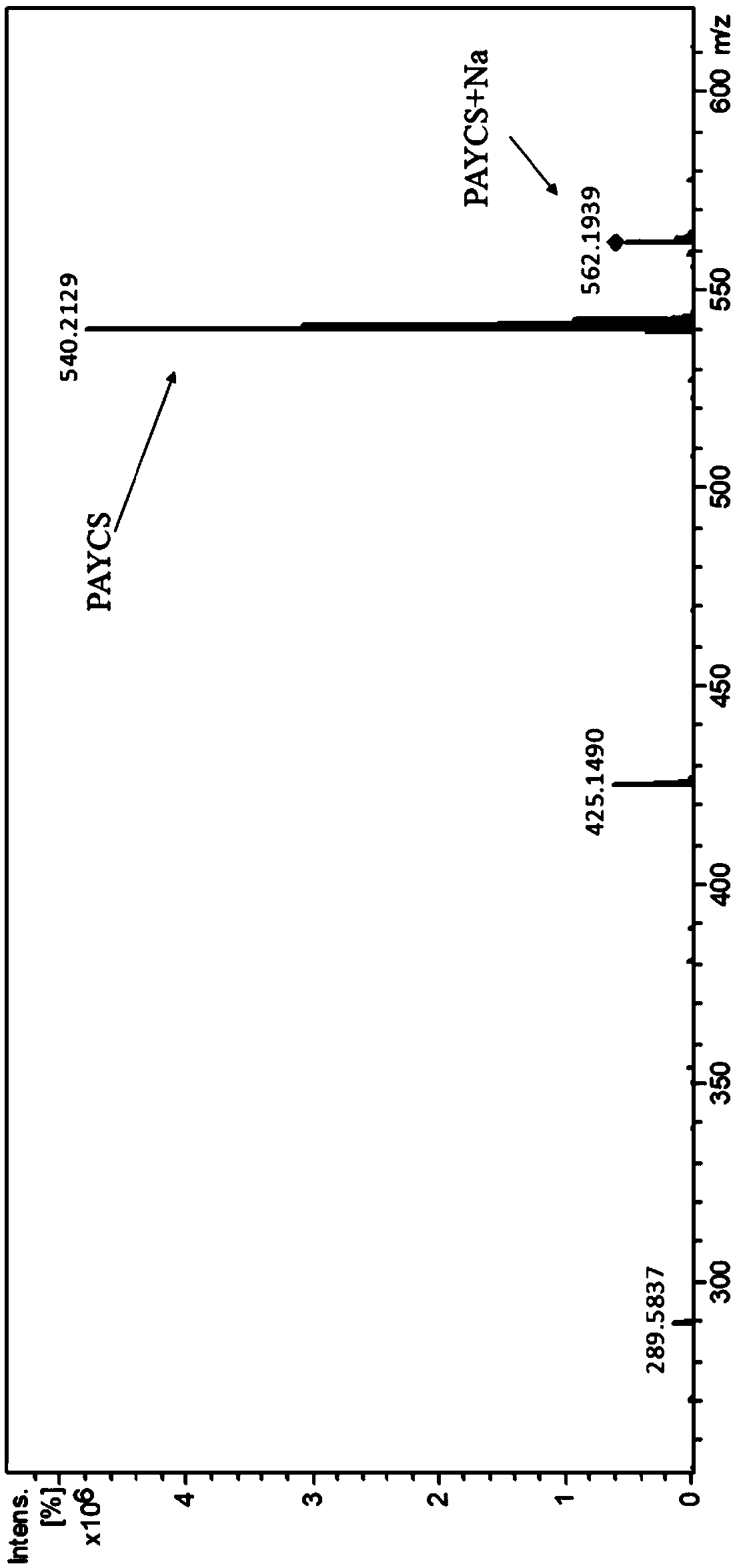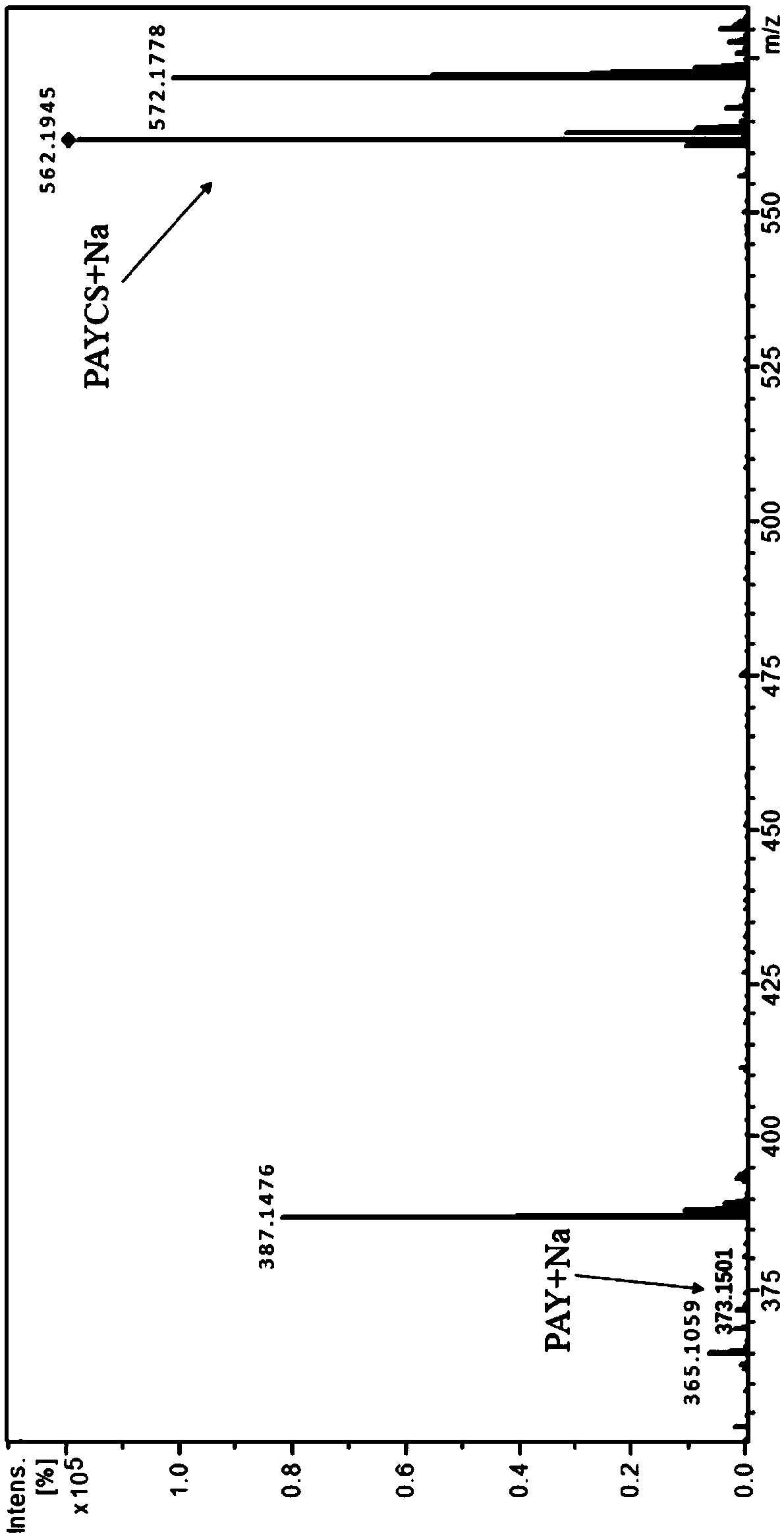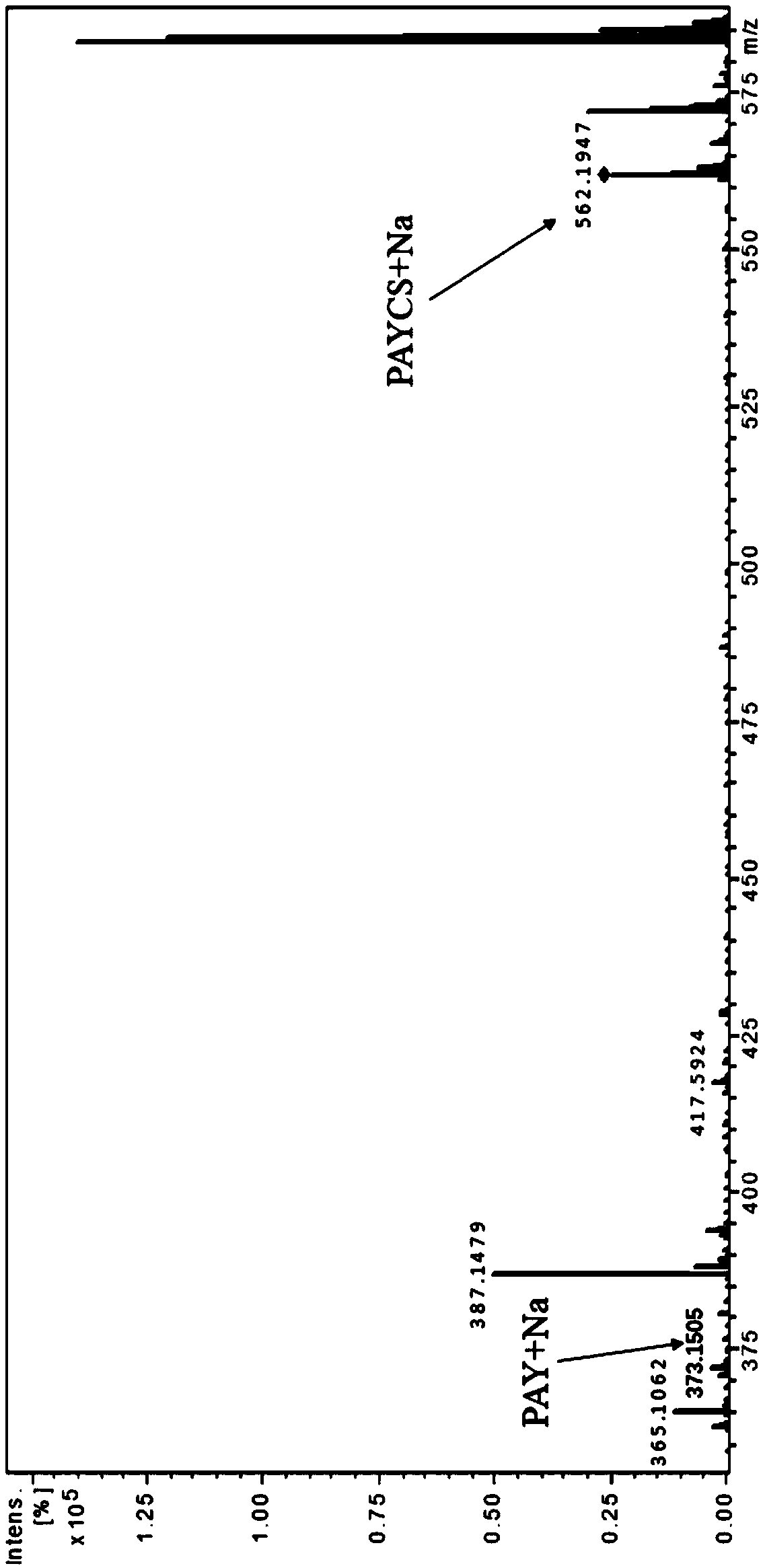Memory improving peptide capable of resisting gastrointestinal digestion and purpose thereof
A technology for improving memory and drugs, applied in the direction of peptides, applications, tripeptide components, etc., to achieve the effect of synergistically improving memory, resisting gastrointestinal digestion, and improving memory ability
- Summary
- Abstract
- Description
- Claims
- Application Information
AI Technical Summary
Problems solved by technology
Method used
Image
Examples
Embodiment 1
[0023] Example 1: Anti-gastrointestinal digestive properties of polypeptide PAY
[0024] 1. In vitro simulated digestion
[0025] Two-step in vitro simulated digestion method operation. Synthetic polypeptide (PAYCS) was prepared as 10mg / mL aqueous solution. First use pepsin (sigma, EC 3.4.4.1; 1:60,000, 3,400 U mg -1 ) to hydrolyze the polypeptide solution (the ratio of enzyme to substrate is 1:50, w / w), enzymatically hydrolyze at 37°C for 120min, and the pH is 2.0. After the hydrolysis, slowly adjust the pH to 7.5, add trypsin (sigma, the ratio of enzyme to substrate is 1:25, w / w), and continue the enzymatic hydrolysis at 37°C for 240min. The whole enzymatic hydrolysis process was carried out in a constant temperature shaker in a water bath. After the trypsin enzymatic hydrolysis, the enzymatic hydrolyzate was heated to 95°C and maintained for 10 minutes to inactivate the enzyme, and the final and intermediate products of in vitro digestion were stored at -20°C for subsequ...
Embodiment 2
[0037] Example 2: Effect of PAY on memory ability of dementia model mice
[0038]Select 48 SPF grade Kunming mice, half male and half male, weighing 18-22 g, provided by the Experimental Animal Center of Guangzhou University of Traditional Chinese Medicine. The feeding environment of the experimental mice was room temperature (21±2)°C, the relative humidity was controlled at 50%-60%, and the light and dark alternated for 12 / 12h. During the experiment, the mice were allowed to eat and drink freely. The mice were placed in the laboratory to adapt to the environment 7 days before the experiment. 48 mice were randomly divided into 4 groups (12 in each group, n=12), respectively blank control group, scopolamine group (model group), piracetam group (positive control group), PAY (0.2mmol / kg ). The blank group and the model group were given equal volumes of distilled water, the positive control group was given piracetam (400mg / kg), and the test group was given the corresponding poly...
Embodiment 3
[0051] Example 3: Effects of PAY on antioxidant-related indicators of mouse brain tissue
[0052] After the water maze test in Example 2, the mice in each group were killed and decapitated, the brains were separated on ice, the bloodstains were washed with ice-cold saline, and the saline was added to homogenate at a mass ratio of 1:9. The homogenate was centrifuged at 3500r / min for 10min at 4°C, the supernatant was taken as the sample to be tested, and stored at -20°C for later use. SOD and GSH-Px activities were determined strictly according to the kit instructions, and the total protein concentration of the samples to be tested was determined with a BCA kit.
[0053] The results are shown in Table 3.
[0054] Table 3 Effect of PAY on antioxidant-related indicators of mouse brain tissue
[0055]
[0056] ## On behalf of the comparison with the normal control group, p** Indicates that compared with the model control group, p<0.01.
[0057] Compared with the normal group...
PUM
 Login to View More
Login to View More Abstract
Description
Claims
Application Information
 Login to View More
Login to View More - R&D
- Intellectual Property
- Life Sciences
- Materials
- Tech Scout
- Unparalleled Data Quality
- Higher Quality Content
- 60% Fewer Hallucinations
Browse by: Latest US Patents, China's latest patents, Technical Efficacy Thesaurus, Application Domain, Technology Topic, Popular Technical Reports.
© 2025 PatSnap. All rights reserved.Legal|Privacy policy|Modern Slavery Act Transparency Statement|Sitemap|About US| Contact US: help@patsnap.com



